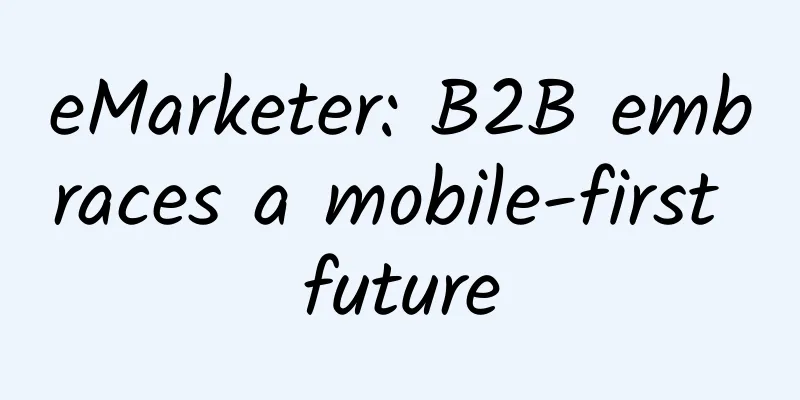eMarketer: B2B embraces a mobile-first future

|
Smartphones and tablets enter the workplace as 'bring your own device' trend takes off Smartphones and tablets are essential companions for busy business professionals, though desktops and laptops remain the primary workhorse in the office. As mobile permeates every aspect of the workplace, that paradigm is shifting quickly, affecting the path to business-to-business (B2B) e-commerce purchases and, in turn, changing the budgets, strategies, and actions of B2B marketers, according to a new eMarketer report, "B2B Mobile Marketing: As Buyers Go Mobile, Sellers Are Catching Up." The trend toward "bring your own device" (BYOD) in the workplace, which allows employees to use their personal smartphones, tablets or laptops on the company network, has led to an influx of smartphones and tablets into the office. In an April 2013 survey by enterprise mobility service provider iPass, nearly three-quarters of North American mobile workers said their companies had a BYOD policy. Mobile usage is no longer limited to remote or mobile workers. According to Forrester Research in Q4 2012, while 91% of connected employees around the world use a computer at their desk, 64% also use a smartphone. The only other place where more respondents use their smartphone is at home. And, after home, the desk is the most popular place for tablet use. Desktop computers still reign supreme in the office, but some believe that "mobile-first" will become commonplace in the coming years. In a March 2013 Forbes Insights study conducted in partnership with Google, more than half of U.S. business executives said they would replace desktop computers with mobile devices as their primary business platform within the next three years. This shift to mobile-first is underway, blurring the already fuzzy lines between “work time” and “personal time.” While demand for high-quality mobile experiences is growing among enterprise users, consumer-facing companies have been working to deliver on that demand over the past few years. Via: 199it Translated from eMarketer |
Recommend
Dark matter vs. modified gravity theory, has the ultimate showdown begun?
Dark matter has always been a frontier topic in p...
What are the effects and functions of Gynostemma pentaphyllum tea
Many of our friends may drink Gynostemma tea in o...
If you wake up 100 times every night, can you still say you slept well?
Late at night, you wake up from sleep, and the al...
Scutellaria barbata and Hedyotis diffusa
When you see these two names, do you just know th...
How to stop itching of chickenpox
There are many symptoms that chickenpox can cause...
How to eat red ganoderma for the best effect
There are many ways to eat Ganoderma lucidum, suc...
What are the medicinal values of stevia?
Stevia is a common sweetener because of the sweet...
How "empty" is an empty stomach? Can't you eat milk and bananas on an empty stomach?
In daily life, some activities must be performed ...
The efficacy and function of iron whip grass
There are so many medicinal herbs in the world, a...
What are the benefits of drinking Jiaogulan in water?
The therapeutic value of drinking Gynostemma pent...
The original site of the overpass that disappeared for nearly 90 years has finally seen the light of day again. How was it discovered and found?
Beijing's Central Axis, an axis that carries ...
What kind of people are suitable to eat Panax notoginseng powder?
In our daily life, there are many Chinese herbal ...
What does burdock look like?
If many people don't know what burdock is, th...
The efficacy and function of Pu Songshi
For Chinese medicinal materials such as Pu Songsh...
What are the medicinal values of saxifrage
Most people may not know what Saxifrage is, becau...









